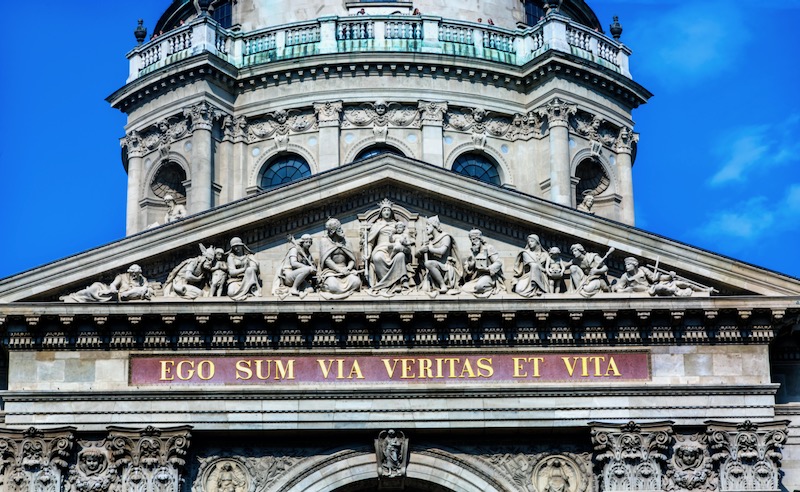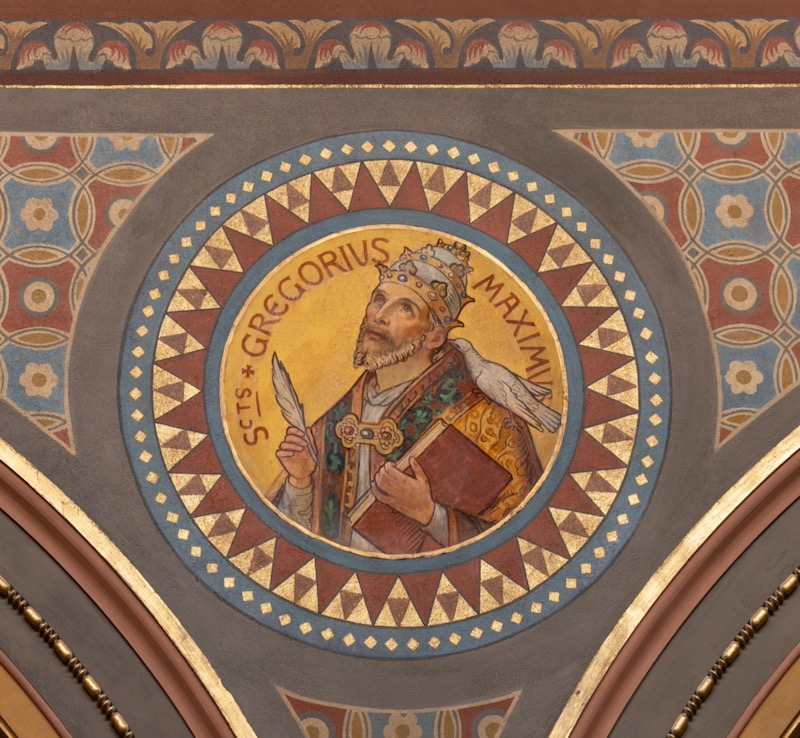The author of John’s gospel has often been referred to as the ”Mystical Evangelist”, because of the emphasis he places on the intimately personal nature of Jesus’ relationship with us. He expresses it in terms of indwelling and communion of life and love. But he also recognises there are no expressions adequate to describe it satisfactorily; and so he has recourse to images, such as the relationship between the vine and its branches, and Jesus making his home within us, and our making our home in him.
That same felt failure of words to express this relationship is present in the writings of all the great mystics, many of whom, in the struggle to convey even an inkling of their experience, forsake prose for poetry. The sublime and often overtly erotic poetry of the 16th century Spanish mystics, St Teresa of Avila and St John of the Cross, are among the best-known examples. But even earlier, many of the Church Fathers also freely used the language of human love and desire to express how God draws us to himself.
St Gregory the Great’s writings, for instance, are filled with reassuringly earthy images, voicing our desire for God and his desire for us: a lover asking for yet another kiss; a person with a sweet tooth, longing for more of the same; the dizziness experienced at the edge of a precipice. “All those in whom the desire for God is deeply embedded never cease yearning for more. Every delight in God becomes kindling for still more ardent desire…We are led to God by desire, drawn to him as if pulled by a rope.”
And whereas we’re accustomed to speaking of God’s goodness, truth and love, these early Christian writers frequently speak also of his surpassing beauty, the ultimate object of our desire and the originating source of attraction. St Augustine who knew from personal experience more than most about the power of physical attraction, gives exquisite expression to his sense of God’s sublime beauty, irresistibly attracting us into that personal relationship with Him, for which we’ve been made and without which we remain forever restless. “Your word struck my heart, Lord, and from that moment I loved you,” he says.
And, lamenting his failure until then to see the beauty of God, even though it had ever before his eyes, he utters his famous words: “Late have I loved thee, O beauty, so ancient and so new: late have I loved thee.” Again, in a moving sermon on Psalm 45, he relates Christ’s story solely in terms of his beauty. “Christ”, he says, “is beautiful in heaven; beautiful on earth; beautiful in the womb; beautiful in his mother’s arms; beautiful in his miracles; beautiful under the scourge; beautiful when inviting to life…beautiful when laying down his own life; beautiful in taking it up again; beautiful on the cross; beautiful in the tomb; beautiful in heaven.”
These great Christian thinkers didn’t doubt for a second that God’s way of captivating us, is through our natural desire for beauty. Not the beauty of “false compare”, but the beauty that engages our whole selves: our hearts, minds, souls, and even our senses, which, according to Aquinas, have been given to us by God so that we might delight in Him through his creation. Our deepest felt desire, however, again, according to Aquinas, can be satisfied only by divine love, the source and goal of all love. In God’s beauty, truth and goodness, we see what we desire most and what satisfies every desire.
In this life, of course, desire is never perfectly satisfied because in this world we possess nothing perfectly: indeed, we possess nothing at all in any real sense, not even our lives. But though desire is forever restless, love brings peace; and what is sought in desire, is possessed perfectly only in love made perfect in heaven. What John’s gospel and the Fathers of the Church open our minds to, then, is the mystery at the heart, not only of the Christian life, but of creation itself: namely, that in Christ, through that desire for and attraction to beauty that so deeply shapes our nature, God draws us into his own life, so that Christ becomes the light by which we see and the love by which we live. Clement of Alexandria (150-215) couldn’t be more explicit: “Our Saviour is beautiful and is loved by those who desire true beauty.” But the mystery is even deeper. Nothing brings us into more immediate contact with Christ’s beauty than our fellow human beings.
We need look no further: – for Christ plays in ten thousand places
Lovely in limbs, and lovely in eyes not his
To the Father through the features of men’s faces.
Gerard Manley Hopkins, As Kingfishers Catch Fire



 Loading ...
Loading ...
What do you think?
You can post as a subscriber user ...
User comments (0)